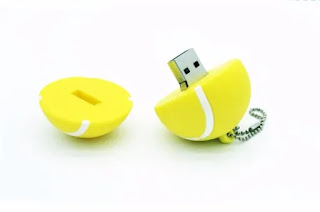Secondary storage is storage for noncritical data that does not need to be frequently accessed. It trades high performance for economical long-term archiving. Data that is accessed less frequently can be migrated to secondary storage devices to free up space and improve performance on primary storage devices and lower overall storage costs. Types of secondary storage include devices for backup and archiving.
There are two main benefits to moving infrequently used data from primary storage to secondary storage: to free capacity on primary storage and to lower overall storage costs.
Types of storage devices
Hard disk
A hard disk drive [HDD], commonly referred to as a hard drive, hard disk or fixed disk drive. It is a non-volatile secondary storage device which stores digitally encoded data on rapidly rotating platters with magnetic surfaced. The hard disk is an electro mechanical device. The hard disk is also known as Winchester disk. HDDs record data by magnetizing a ferromagnetic material directionally to represent either a “0” or “1” binary digit. They read the data by detecting the magnetization of the material.
Optical disk
An optical disk is any computer disk that uses optical storage techniques and technology to read and write data. It is a computer storage disk that stores data digitally and uses laser beams (transmitted from a laser head mounted on an optical disk drive) to read and write data.
Compact disks (CD), digital versatile/video disks (DVD) and Blu-ray disks are currently the most commonly used forms of optical disks. These disks are generally used to:
· Distribute software to customers
· Store large amounts of data such as music, images and videos
· Transfer data to different computers or devices
· Back up data from a local machine
Flash drive (USB flash drive)
A USB flash drive is a device used for data storage that includes a flash memory and an integrated Universal Serial Bus (USB) interface. Most USB flash drives are removable and rewritable. Physically, they are small, durable and reliable. The larger their storage space, the faster they tend to operate. USB flash drives are mechanically very robust because there are no moving parts. They derive the power to operate from the device to which they are connected (typically a computer) via the USB port.
Memory/SD card
A Secure Digital card (SD card) is a non-volatile form of flash memory for portable and mobile devices. Because it is not proprietary, SD card usage is widespread. SD cards are located in thousands of consumer electronic device models, including mobile phones, digital cameras, camcorders, tablets and portable audio players.
SD cards come in three compatible sizes, as follows:
· MicroSD (15 mm × 11 mm)
· MiniSD (21.5 mm × 20 mm)
· SD (32 mm × 24 mm)
Memory hierarchy
The memory hierarchy separates computer storage into a hierarchy based on response time. Since response time, complexity, and capacity are related, the levels may also be distinguished by their performance and controlling technologies.[1] Memory hierarchy affects performance in computer architectural design, algorithm predictions, and lower level programming constructs involving locality of reference.










0 comments:
Post a Comment